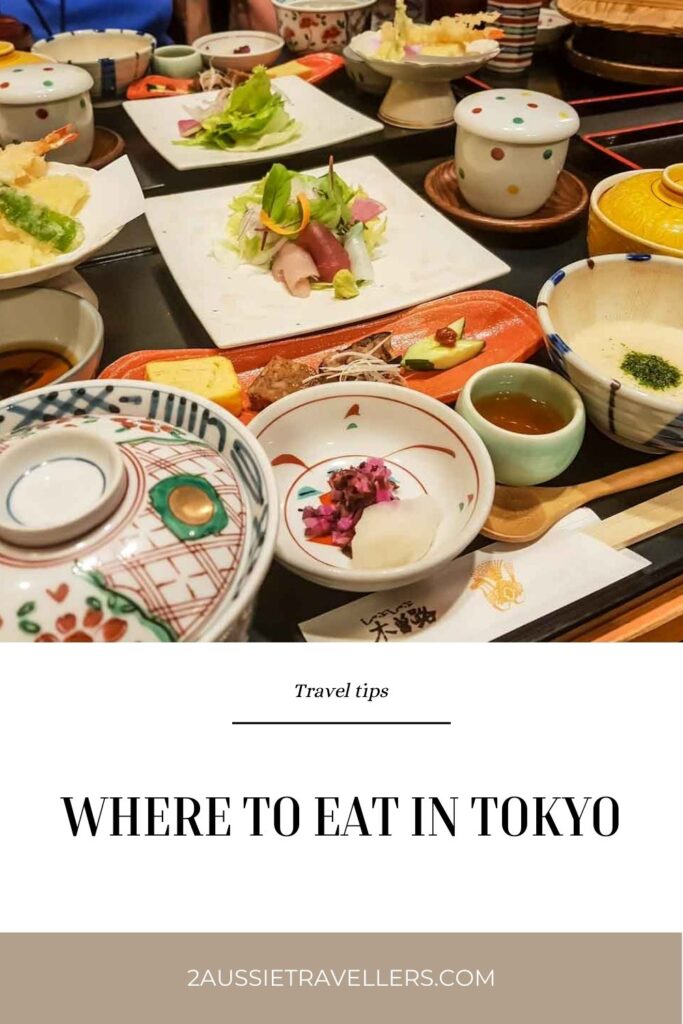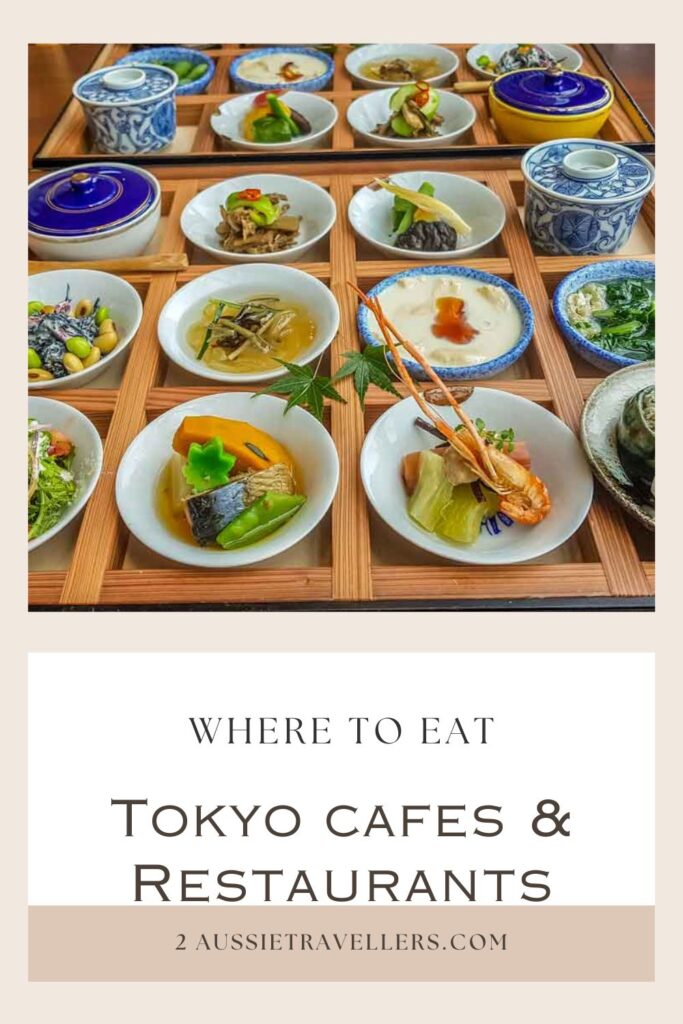Are you wondering where to eat in Tokyo during your stay? Are you looking forward to some great food, local specialties, and authentic experiences but not ready to totally break the budget? We’ve rounded up a few of our favourites around the city.
Whether you are looking for a more traditional style of Japanese cuisine, the izakaya experience, hearty and nourishing local spots or a modern interpretation we have some ideas. Tokyo is a vast city and its many attractions are spaced out, there really is no one central spot to stay and see everything. It also has an amazing transport system so you’ll have no trouble getting to any of these restaurants and we’ll include some links to articles highlighting things to do in each area in case you want to build them into your overall itinerary.
This isn’t intended to be a guide to every restaurant in Tokyo, there are estimated to be over 130,000 eateries in the greater metropolitan area, it’s also not a rehash of the Michelin Guide, they have that segment of the market wrapped but there are a few here that you might want to build into your time in the city.
Table of Contents
Top spots to eat in Tokyo
Usagiya Cafe in Ueno
For a delicious Japanese breakfast that gives a traditional favourite a modern twist, we head to Usagiya café not far from Ueno Hirokoji station. This place is popular with locals for what is claimed to be the best dorayaki in the city so expect a queue. The café is a spin-off from the original store and from 9 am you can experience their own spin on this Japanese sweet as a breakfast plate with your choice of drink.
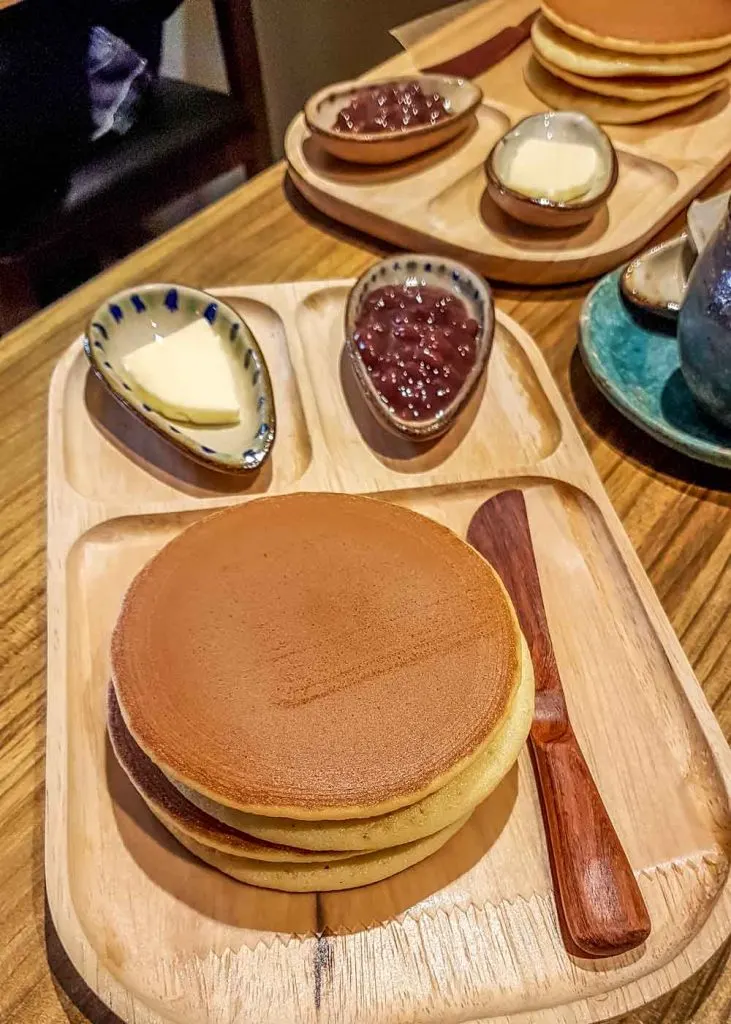
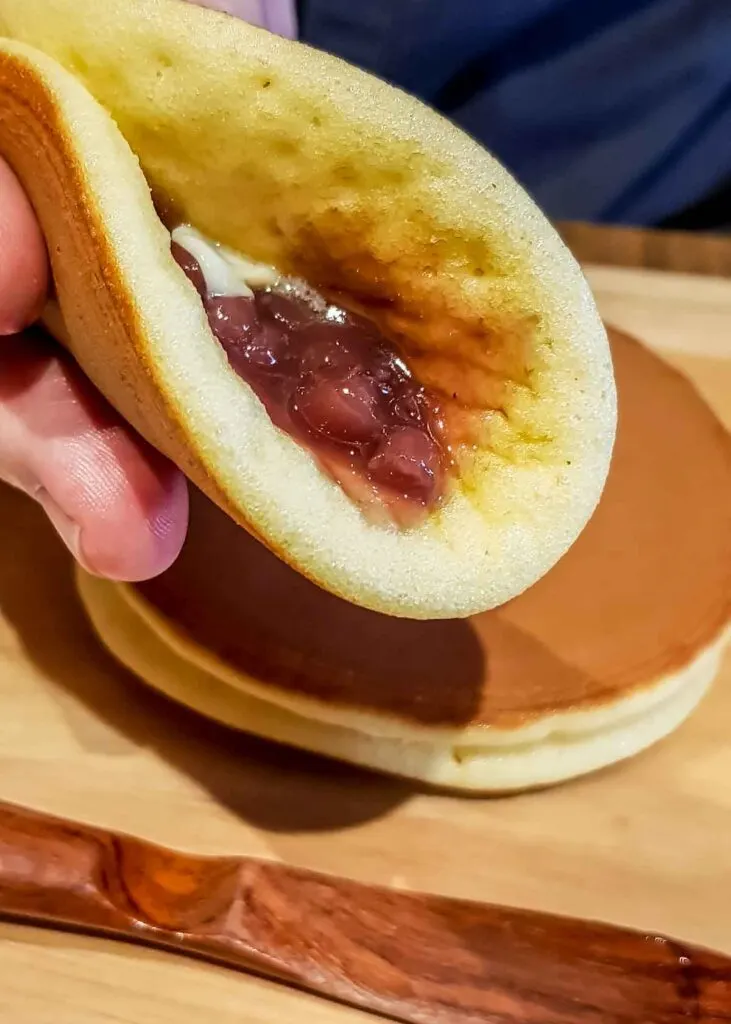
Dorayaki is like a fluffy pancake that is generally filled with red bean paste but in this case, the first two seatings of the morning in the little restaurant are in for a special treat. As they start up the griddles, they serve a set menu of hot and light dorayaki pancakes that you spread with the delicious salted butter, and their lightly sweetened Anko before folding them in half and eating them.
Anko is a red bean paste and at Usagiya it’s served as a jam with whole beans. Alongside the pancakes you order from a choice of drinks, I ordered Genmai, one of my favourites, a green tea blended with toasted rice and Drew had strong black coffee. Both were excellent.
It looks like a very simple set but making it to the opening sessions was well worth it. We arrived early and decided to take a walk around Ueno Park first and arrived back at 9.03 am to find we had missed the first seating. The restaurant only seats 16 people if every seat is full, so we had a 40-minute wait for our turn but like so many of the best foodie places in Japan to get the best you do have to be prepared to queue.
The Ueno area has a lot to see and do so this is a great spot to start off the day with a unique breakfast and strong coffee, or tea, before heading out exploring for the day.
Address: Usagiya Cafe 〒110-0005 Tokyo, Taito City, Ueno, 1-chōme−17−5
Kisoji in Ueno
One minute you are in following the crowds through bustling Ueno before you step off down a flight of stairs and through the doors into this quiet and tranquil oasis. Kisoji has a traditional feel, it is discrete with wooden booths and you are shown to your table by a woman dressed immaculately in a kimono.
This place is mostly frequented by small groups of Japanese women and couples talking in hushed tones across the table, it’s clearly not the hip place to be seen for the young Tokyo set nor does it appear to be on the tourist radar but they cater easily to foreign tourists with an English menu.
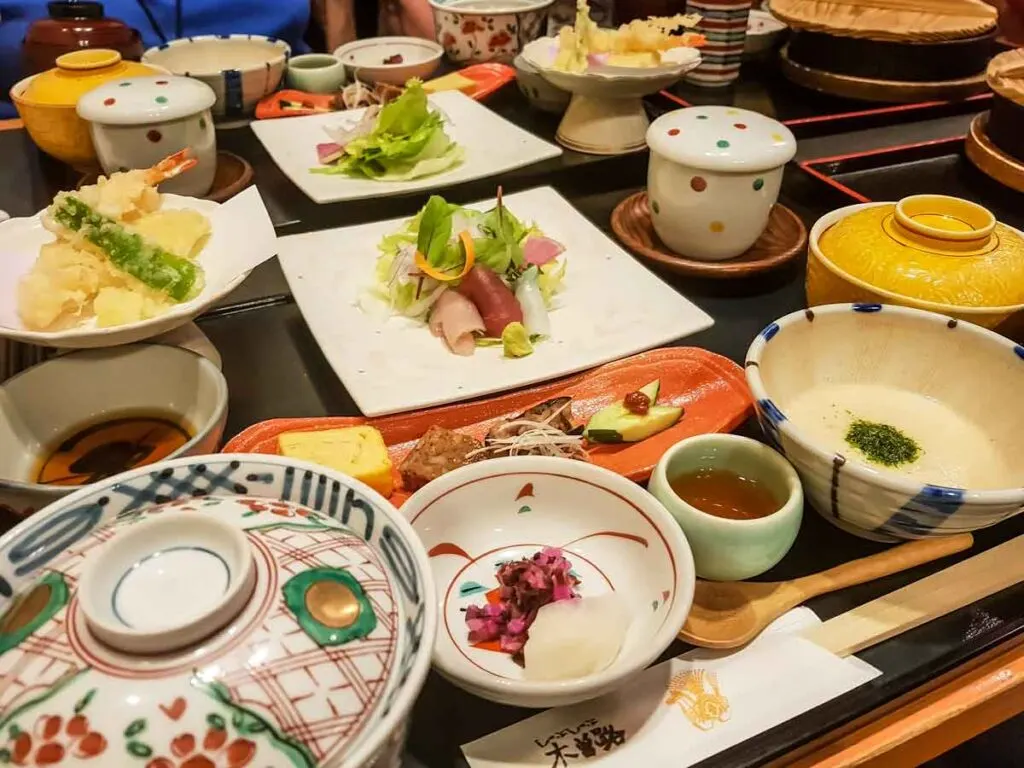
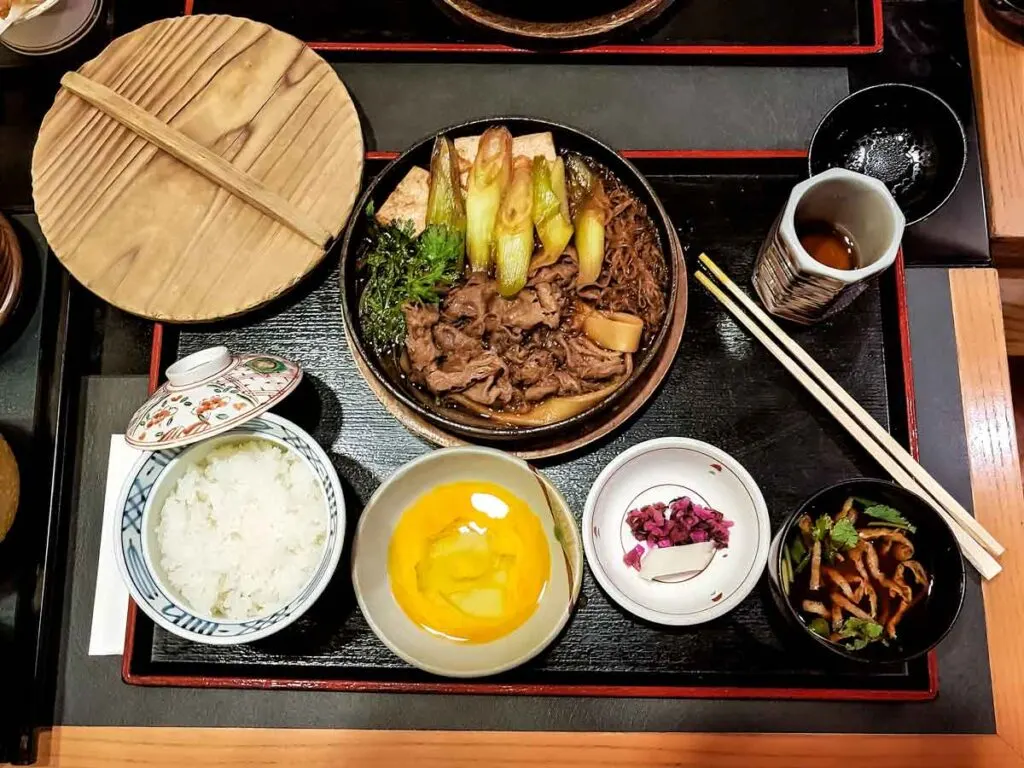
The specialty here is shabu-shabu and sukiyaki but there are other lighter menu options available if you prefer. Meals are Teishoku style, a course or set menu that is very common across Japan where starters, main, sides and dessert are part of your order. It limits the number of decisions required, which means you can try a variety of different dishes while still selecting the primary ingredients and preparation style to your own taste.
Address: Kisoji 〒110-0005 Tokyo, Taito City, Ueno, 2 Chome−7−13
Kunimi in Sumida
Located on the 31st floor of Tokyo Solamachi, the shopping tower adjacent to Tokyo Skytree, this restaurant offers some incredible views over the city both by day and lit up at night. Its speciality is Washoku, traditional Japanese cuisine that is recognised by UNESCO as an intangible cultural heritage.
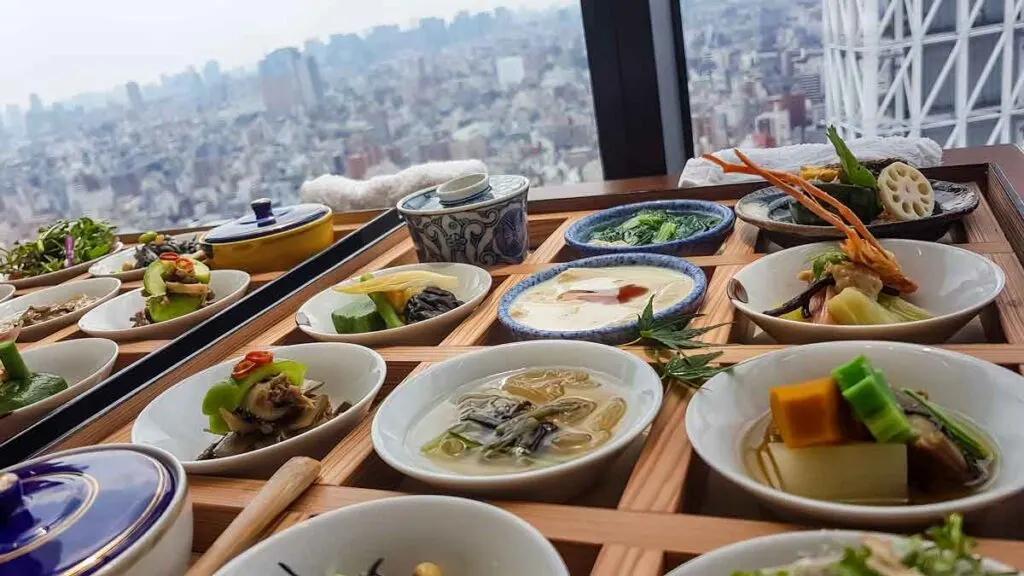
A Washoku menu brings together 4 components:
- fresh ingredients that stay true to their inherent flavours
- a nutritionally balanced meal that fits with a healthy diet
- it’s beautifully presented
- there are ties to both the seasons and annual events or festivities
You’ll recognise this style of eating if you have stayed and eaten at a traditional Japanese Inn (ryokan) during your visit but if you haven’t Kunimi is a great way to experience it. The food is delicious, and the service excellent so when you add in the ambience and this view either by day or evening Kumida is a great choice.
We felt the price here was very fair for the quality and overall experience but you can help your budget a little by dining here with your main meal at lunchtime.
In addition to Skytree in this area, you are just across the river from Asakusa where you’ll find Senso-ji temple with its impressive gates and extensive shopping street of market shops leading up to the temple. There’s a whole list of ideas to fill your day in the Sumida and Asakusa areas in our guide.
Address: Kumida Restaurant 1-1-2 Oshiage, Sumida-ku, Tokyo Skytree Town/Tokyo Solamachi 31F
Botejyu in Akasaka
We’ve been coming to the modern izakaya for about 10 years now for their okonomiyaki, it’s very close to the Akasaka-Mitsuke station on the Ginza and Marunouchi line and also to the Hotel New Otani, a centrally located hotel we have stayed at in the city many times that also has a beautiful Japanese garden that is open to the public. Hie Jinja shrine is a 5-minute walk from Botejyu and about 25 minutes on foot to the Imperial Palace gardens.

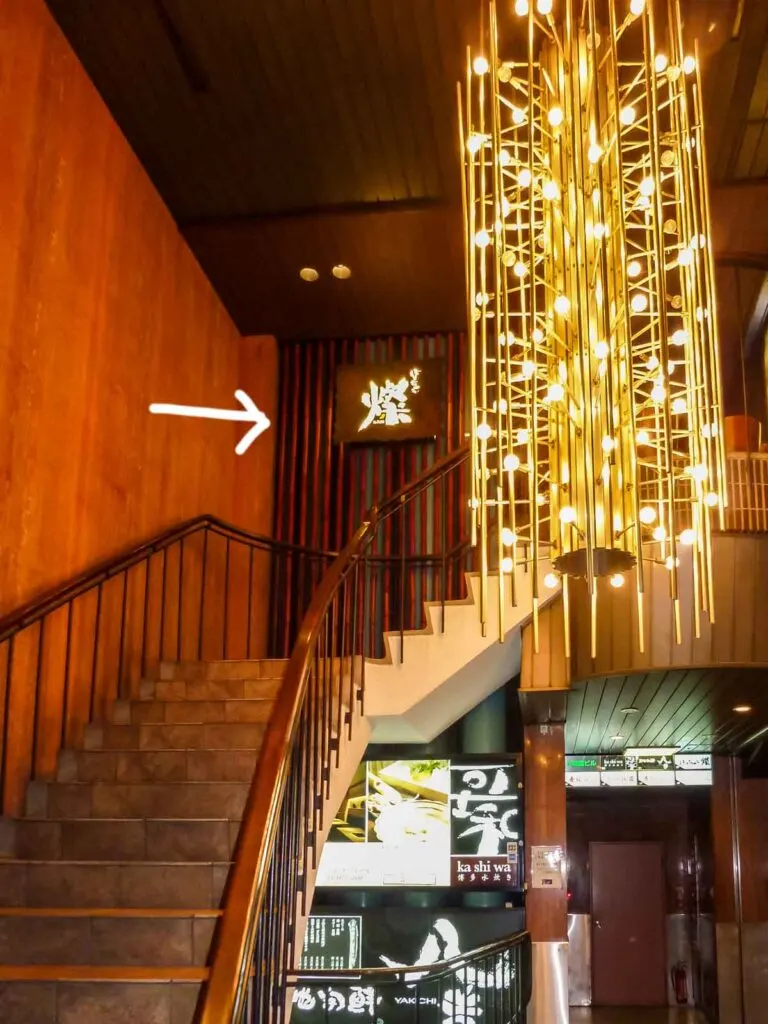
While I do have a love for okonomiyaki, the comfort food that is their specialty, they do offer many more options that are well suited to sharing and are equally as delicious. The interior fit-out is clean and modern with smooth lines and booths that are set out surrounded by wooden screening to give your group a degree of privacy and a feeling of intimacy.
The Okonomiyaki is cooked in the kitchen and delivered piping hot to the hot plate on your table where you can add additional dressings from the mayonnaise, sauces, bonito, seaweed and spicy shichimi (chilli pepper) on the table. This keeps the food fresh and hot while you enjoy your conversation and their extensive drinks menu at your own pace.
Botejyu is part of a chain of restaurants that originated in Osaka but while I will visit their restaurant in Namba when we are staying nearby this one in Akasaka is our favourite and has quite a different ambience reflecting the neighbourhoods they are located in.
A Happy Pancake in Shibuya
If you follow any Japanese food hashtags on Instagram you won’t have been able to miss the wobbly pancakes trend a few years back, well they had their moment but they are still going strong in the Tokyo cafe sect so if you want to give them a go and form your own opinion then my recommendation is A Happy Pancake for the best ones in town.
Like a lot of Japanese foods they aren’t as rich or sweet as they look, they are light and airy and I’d say almost eggy but not quite, I did enjoy these ones with fresh cream, granola and a good strong cup of coffee but Drew went the other direction and picked the savoury but wobbly option.
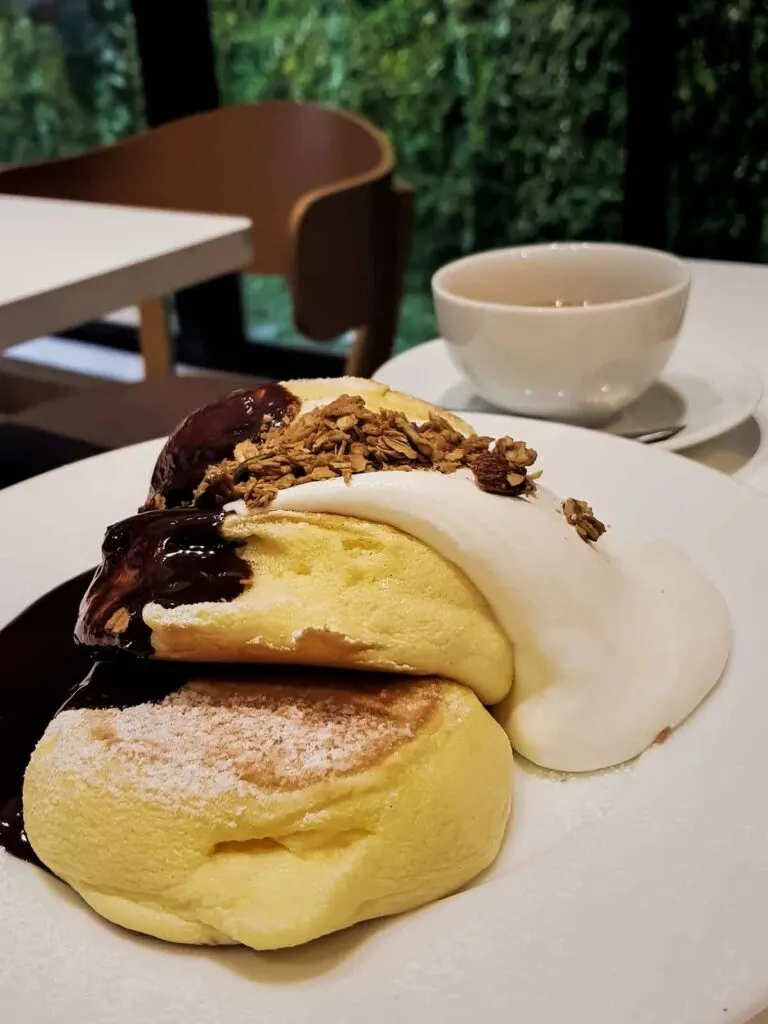
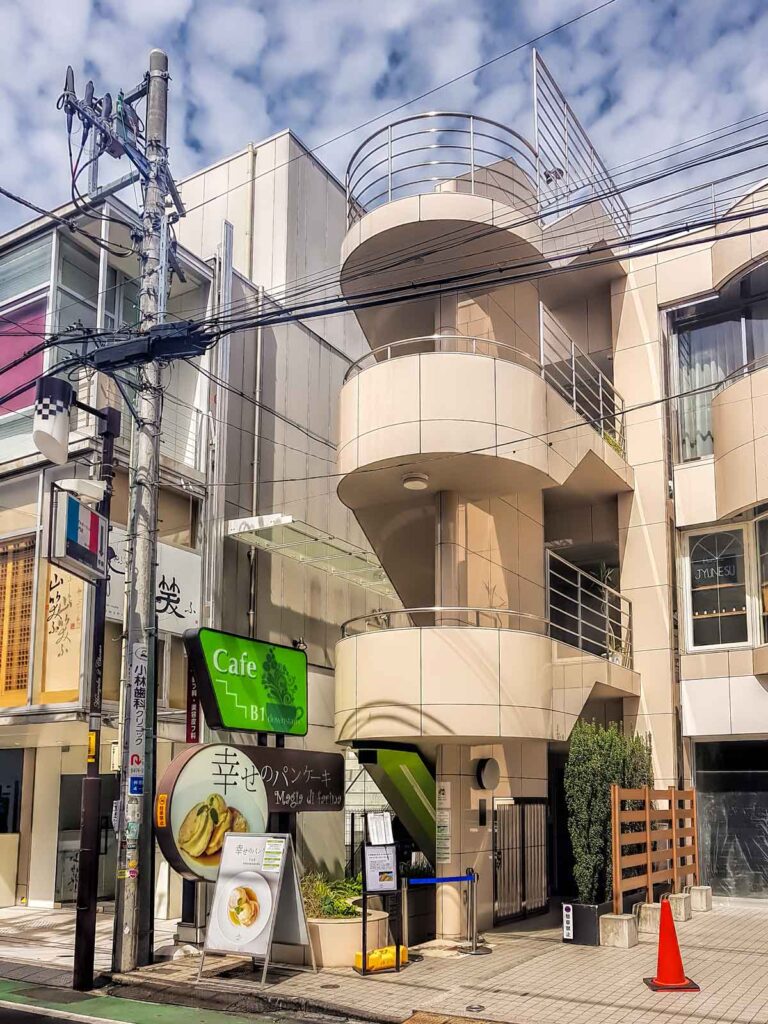
I do almost all of the travel and restaurant research for us but I did start to doubt myself on this one when we arrived at opening time and made our way down the narrow staircase below ground. We’re used to finding great food in Japan in less than obvious locations but this one did surprise us when it opened up into a bright and airy cafe with floor-to-ceiling windows down one side with a garden view
Nezu Cafe
The Nezu Gardens and Gallery are one of our favourite spots around Shibuya. The garden is stunning in its presentation but also the exquisite collection of art displayed throughout it. Then inside the bright and modern gallery, the curated collection is changed regularly.
Tucked away between the garden and gallery building is Nezu Cafe, a delightful spot with expansive glass making you feel that you are part of the lush green exterior.
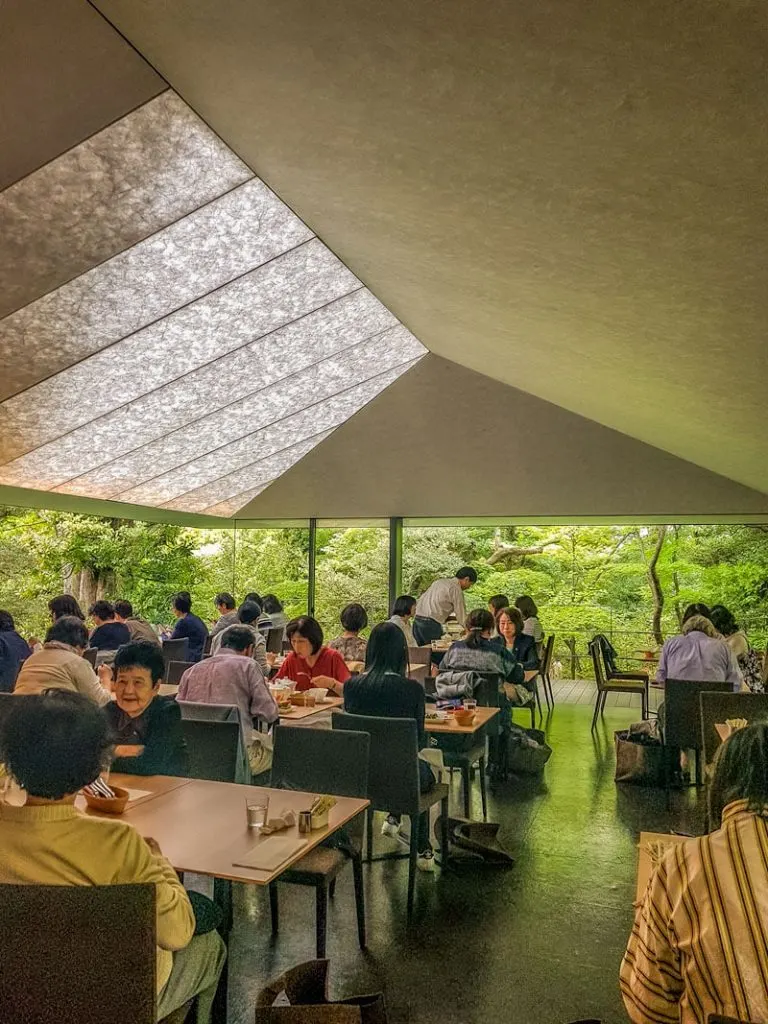
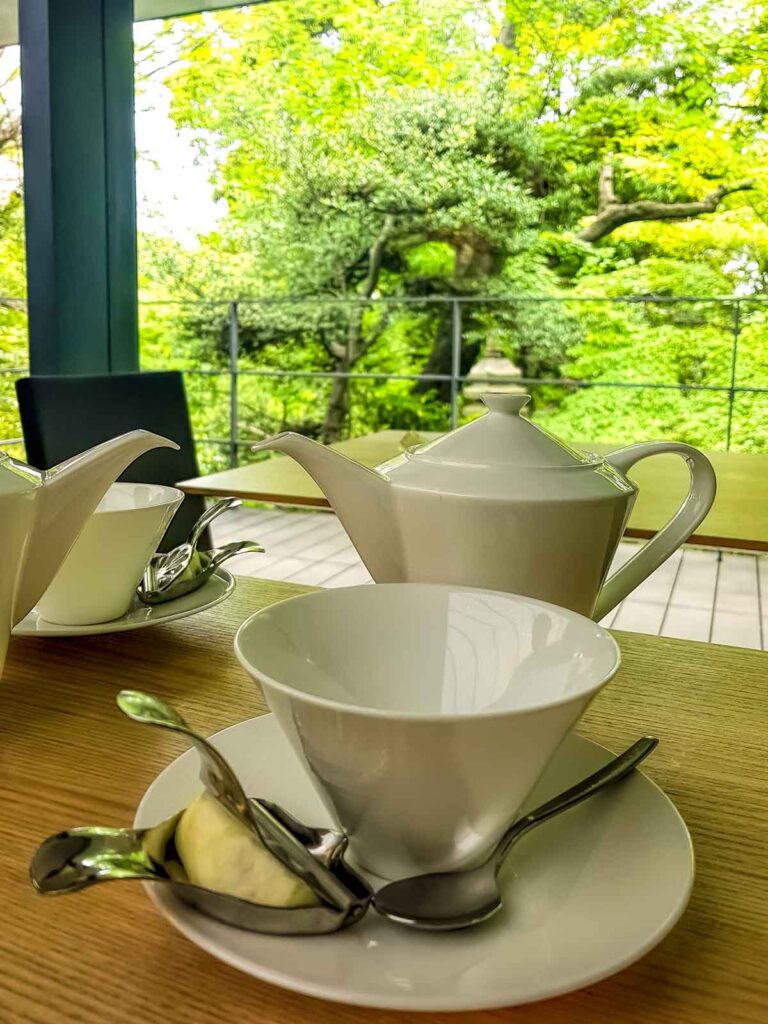
The cafe features a variety of teas and coffee including their own blend. The menu is small but beautifully presented and delicious. Choose from cake or apple pie if you are in the mood for something light and sweet or the winter meal options included a rich warming stew or beef pie served with salad.
Address: Nezu Cafe 6-chōme-5-1 Minamiaoyama, Minato City, Tokyo 107-0062
Reissue Cafe in Shibuya
We love this part of Tokyo and head in here often, Shibuya has a lot going for it and it’s easy to walk from shopping to cafes and bars, parks and gardens, museums and galleries and a few historic and cultural inclusions too.
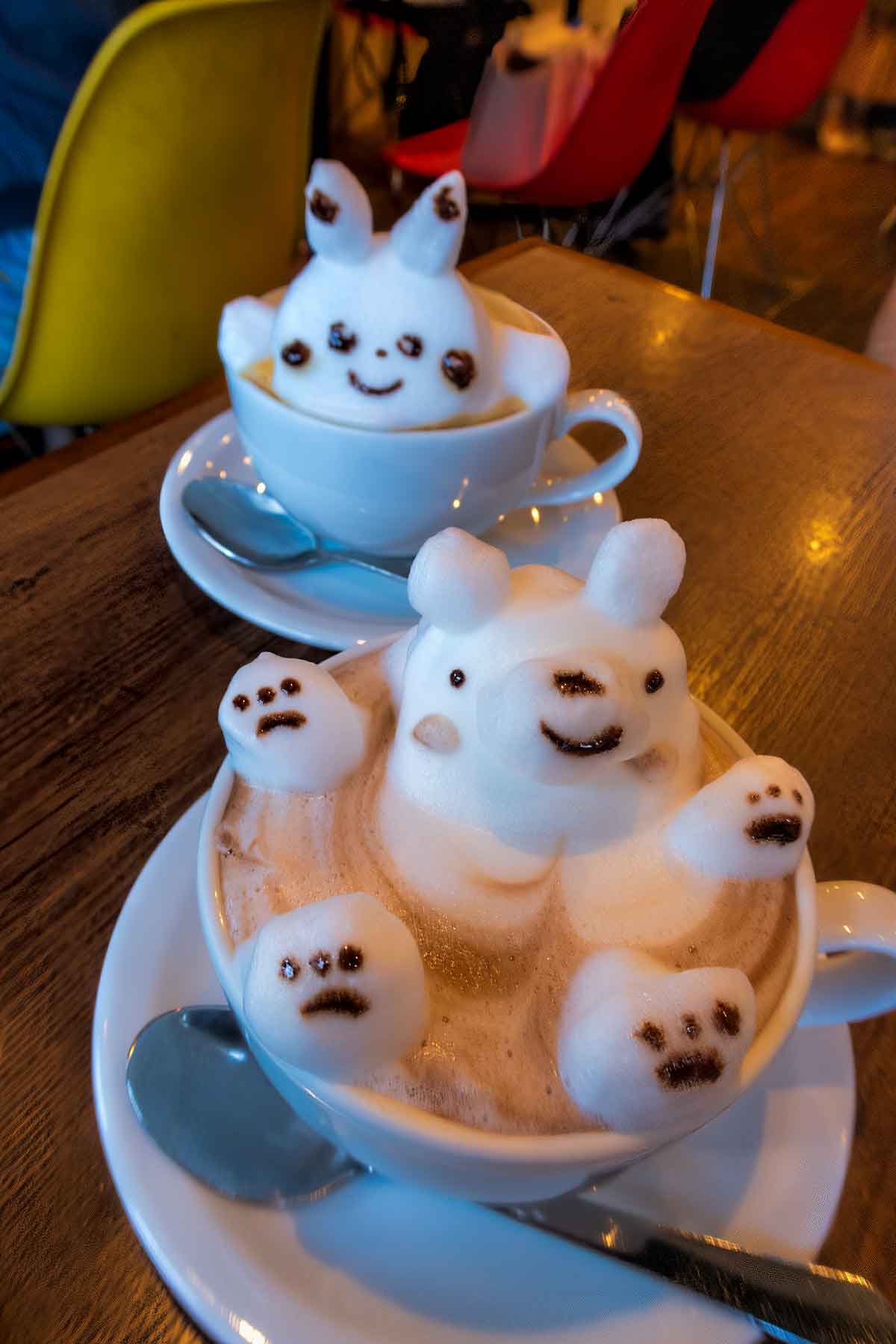
Reissue Cafe is definitely part of the Kawaii culture and a place the kids will love but don’t think of it as ‘just for kids’, it’s a popular date spot and somewhere to catch up with friends. Cafe Reissue is definitely known for its latte art, you come here for the cute 2D and 3D characters you can order floating in your coffee but they also serve a selection of cakes from 10 am until 7 pm with a limited lunch menu also available through the middle of the day.
Address: Reissue Cafe 3 Chome-25-7 Jingumae, Shibuya City, Tokyo 150-0001
Easy and handy phrases when eating out in Japan
We don’t speak Japanese, believe me, I have tried to learn but I just don’t have an aptitude for languages. There are a handful of phrases that I do find useful and while they aren’t essential, they can make really important stuff like eating great food a little easier.
- When you arrive at a restaurant they will want to know how many are in your party before you’re seated. The phrase “Ni mei desu” or “there are 2 of us” will be useful.
- Not speaking Japanese can make the job more difficult for the waitress so “sumimasen” which is both sorry and excuse me can be helpful as you navigate this process. It’s also used to attract the attention of the waitress if necessary although most places are pretty attentive.
- I can’t read Japanese but many places have an English or picture menu available. You can ask “Eigo no menyu wa arimasuka” or “is there an English menu”.
- With a picture menu or selecting from food in a display case you can use “kore okudasai” or “kore onagai shimasu” both of which mean “I’ll have this, please”. If you’d both like the same then “kore futatsu onagai shimasu” is “two of these please”.
- When leaving a restaurant, “gochisosama deshita“, thank you for the meal is used.
- And of course, thank you (arigato) or thank you very much (arigato gozaimasu).
If you found this article useful please consider saving it to Pinterest. It makes it easy for you to find it again, it helps us, and it helps other travellers to find the information they are looking for.
